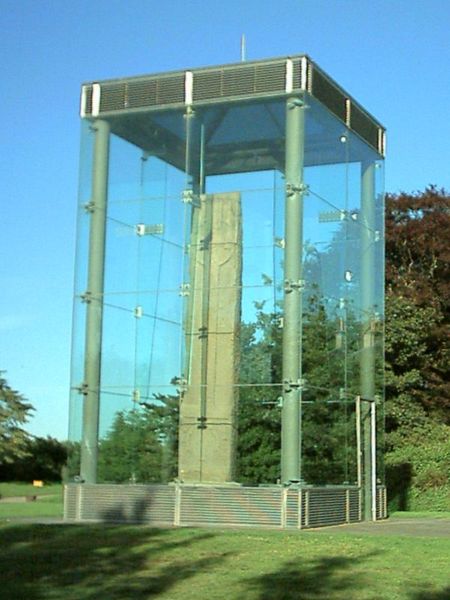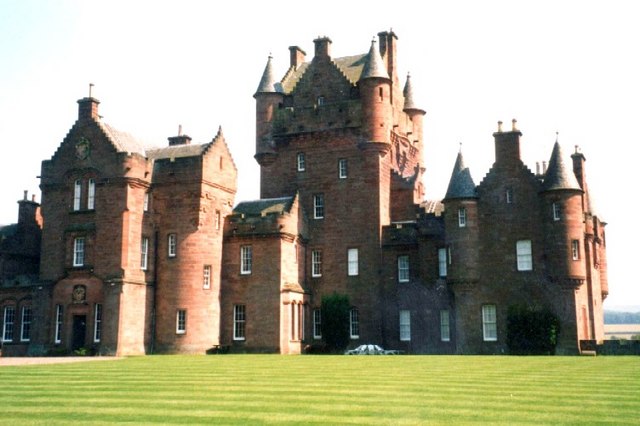|
Culbin House
Culbin House was a manor house, in the Culbin Sands, Forest and Findhorn Bay, Culbin Sands, near Forres, Moray in Scotland. The house was the Caput baroniae, caput of the Barons in Scotland, feudal barony of Culbin. History The estate was once the home of Richard de Moravia, ancestor of the Murrays of Culbin, who settled in the area during the late 12th century. The estate passed by marriage of the heiress Gyles Murray to Thomas Kinnaird, in the 15th century. The last laird, Alexander Kinnaird, abandoned the estate in 1694, due to sand dunes burying the farmland and finally the house. The remains of the house are located under sand dunes. Citations References * {{DEFAULTSORT:Culbin House Clan Murray Ruins in Moray ... [...More Info...] [...Related Items...] OR: [Wikipedia] [Google] [Baidu] |
Culbin Sands, Forest And Findhorn Bay
Culbin Sands, Forest and Findhorn Bay is a huge area of coast and countryside and an SSSI (site of special scientific interest) in Moray, Scotland, stretching from just east of the town of Nairn eastwards to the village of Findhorn and its bay. All of the areas are very important for wildlife in general and are strongly protected by law. The Culbin Sands are known in Gaelic as Bar Inbhir Èireann. Culbin Forest This huge forest is almost completely owned by the Forestry and Land Scotland. It is split by several large paths and smaller tracks in between. The densely covered areas off these paths are difficult to traverse. Most walks are taken beginning at the south of the forest at Wellhill Car Park and ending at the beach. Among the trees there are several strange monoliths bearing messages, and at one tree there is a small plaque commemorating its planting by Prince Charles. Although mostly made up of tall pines and coarse ground cover, Culbin also has many more open, sandy patch ... [...More Info...] [...Related Items...] OR: [Wikipedia] [Google] [Baidu] |
Forres
Forres (; gd, Farrais) is a town and former royal burgh in the north of Scotland on the Moray coast, approximately northeast of Inverness and west of Elgin. Forres has been a winner of the Scotland in Bloom award on several occasions. There are many geographical and historical attractions nearby such as the River Findhorn, and there are also classical, historical artifacts and monuments within the town itself, such as Forres Tolbooth and Nelson's Tower. Brodie Castle, the home of the Brodie Clan, lies to the west of the town, close to the A96. A list of suburbs in the town of Forres contains: Brodie, Dalvey, Mundole and Springdale. Pre-history and archaeology Between 2002 and 2013 some 70 hectares of land was investigated by archaeologists in advance of a proposed residential development on the southern fringes of the town. They found an extensive Iron Age settlement and evidence that people lived in the area from the Neolithic (radiocarbon dates from the 4th to the mi ... [...More Info...] [...Related Items...] OR: [Wikipedia] [Google] [Baidu] |
Moray
Moray () gd, Moireibh or ') is one of the 32 local government council areas of Scotland. It lies in the north-east of the country, with a coastline on the Moray Firth, and borders the council areas of Aberdeenshire and Highland (council area), Highland. Between 1975 and 1996 Moray, with similar boundaries, was a districts of Scotland, district of the then Grampian Region. History The name, first attested around 970 as ', and in Latinised form by 1124 as ', derives from the earlier Celtic forms *''mori'' 'sea' and *''treb'' 'settlement' (c.f. Welsh language, Welsh ''môr-tref''). During the Middle Ages, the Province of Moray was much larger than the modern council area, also covering much of what is now Highland (council area), Highland and Aberdeenshire. During this period Moray may for a time have been either an independent kingdom or a highly autonomous vassal of Kingdom of Alba, Alba. In the early 12th century, Moray was defeated by David I of Scotland following a conflict ... [...More Info...] [...Related Items...] OR: [Wikipedia] [Google] [Baidu] |
Caput Baroniae
In the customs of the kingdom of England, the ''caput baroniae'' (Latin, 'head of the barony') was the ancient, or chief seat or castle of a nobleman, which was not to be divided among the daughters upon his death, in case there be no son to inherit. Instead, it was to descend entirely to the eldest daughter, ''caeteris filiabus aliunde satisfactis'' (other daughters satisfied elsewhere). The central settlement in an Anglo-Saxon multiple estate was called a ''caput'',Michael Aston, ''Interpreting the Landscape'' (Routledge, reprinted 1998, page 34) (also short for ''caput baroniae''). The word is also used for the centre of administration of a hundred 100 or one hundred (Roman numeral: C) is the natural number following 99 and preceding 101. In medieval contexts, it may be described as the short hundred or five score in order to differentiate the English and Germanic use of "hundred" to des .... References English family law Feudalism in England English society< ... [...More Info...] [...Related Items...] OR: [Wikipedia] [Google] [Baidu] |
Barons In Scotland
In Scotland, a baron or baroness is the head of a feudal barony, also known as a prescriptive barony. This used to be attached to a particular piece of land on which was situated the ''caput'' (Latin for "head") or essence of the barony, normally a building, such as a castle or manor house. Accordingly, the owner of the piece of land containing the ''caput'' was called a baron or baroness. According to Grant, there were around 350 identifiable local baronies in Scotland by the early fifteenth century and these could mostly be mapped against local parish boundaries. The term baron was in general use from the thirteenth century to describe what would have been known in England as a knight of the shire.Alexander Grant, "Franchises North of the Border: Baronies and Regalities in Medieval Scotland", Chapter 9, Michael Prestwich. ed., ''Liberties and Identities in Medieval Britain and Ireland'' (Boydell Press: Woodbridge, 2008) The 1896 edition of ''Green's Encyclopaedia of the Law ... [...More Info...] [...Related Items...] OR: [Wikipedia] [Google] [Baidu] |
Richard De Moravia
Richard de Moravia or Richard de Moray of Culbin or of Cubyn, was a Scottish nobleman famed for his victory over the Vikings at the Battle of Embo which took place in Sutherland, Scotland in 1245. Origins Richard was a son of Murdac (Muiredach), son of Alexander de Moravia. This is proven in a charter from Abbot of Dunfermline, which identifies Richard as "Ric de Moravia fil Murdaci filii Alexandri de Moravia". He was also either the cousin, or nephew, of Hugh or Hugo de Moravia, also known as Hugh Freskin, who was the first Lord of Sutherland and whose son was William de Moravia, 1st Earl of Sutherland (d.1284). Richard's brother was Gilbert de Moravia (d.1245) who was Bishop of Caithness. Gilbert is also known to have had an older brother John, and a younger brother, Simon. Castle and lands Richard de Moravia received from his elder brother, Gilbert, all of the lands that Gilbert had received from Hugo Freskyn, (also recorded as Hugo de Moravia) and the charter was confi ... [...More Info...] [...Related Items...] OR: [Wikipedia] [Google] [Baidu] |
Clan Murray
Clan Murray () is a Highland Scottish clan. The chief of the Clan Murray holds the title of Duke of Atholl. Their ancestors were the Morays of Bothwell who established the family in Scotland in the 12th century. In the 16th century, descendants of the Morays of Bothwell, the Murrays of Tullibardine, secured the chiefship of the clan and were created Earls of Tullibardine in 1606. The first Earl of Tullibardine married the heiress to the Stewart earldom of Atholl and Atholl therefore became a Murray earldom in 1626. The Murray Earl of Atholl was created Marquess of Atholl in 1676 and in 1703 it became a dukedom. The marquess of Tullibardine title has continued as a subsidiary title, being bestowed on elder sons of the chief until they succeed him as Duke of Atholl. The Murray chiefs played an important and prominent role in support of William Wallace and Robert the Bruce during the Wars of Scottish Independence in the 13th and 14th centuries. The Murrays also largely supported th ... [...More Info...] [...Related Items...] OR: [Wikipedia] [Google] [Baidu] |



